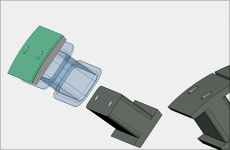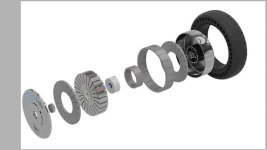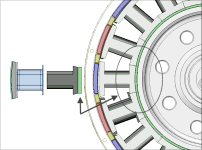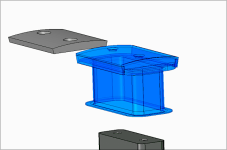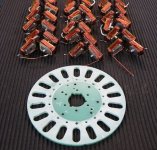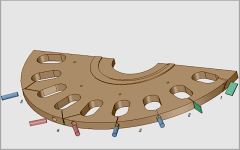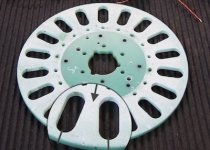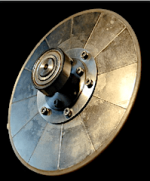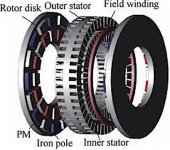Sorry, my bad, I should have included the link. Yea, it's for flux adjustment, as stated on page 17, fig 7.
https://ieeexplore.ieee.org/stamp/stamp.jsp?arnumber=7933123
All "over my head" stuff, and too much info for a DIY guy like me at the moment. Interesting though, and I've also seen
the coil in the picture above replaced with a copper tube, for water cooling.
As far as the double sided stator in the picture goes, I'm just trying to understand, not be argumentative, my point was,
that if the back iron between the cores is made thick enough, (still needs to be hysteresis free), then the flux path
changes from going through the plate, as my motor does,.. to going between the cores sideways, on one side, in a 'U'
shape. In which case there wouldn't be a shorted turn anymore. The two sides share the center iron as back irons.

Also, any material that contains free electrons, (all metals), will react to AC current, by turning into heat and wasted
energy,.. depending on the amount of free electrons present in the metal.
Silver is the worst, titanium is best, there may be other exotics.
At the same time, motors are a compromise in general, and using some metals as a stator material as in this build,
may actually be acceptable to a point, such as aluminum, 304 stainless, or Ti. if the rpm is slow enough.
But the turn must still be cut, or it will "lock" the motor. I witnessed that in the last build.
Well, we are still working on sourcing the titanium, or I should say coleasterling is, and it's defiantly looking do-able
at the moment,.. so I think it's going to be a 'go'. Got my fingers crossed.





